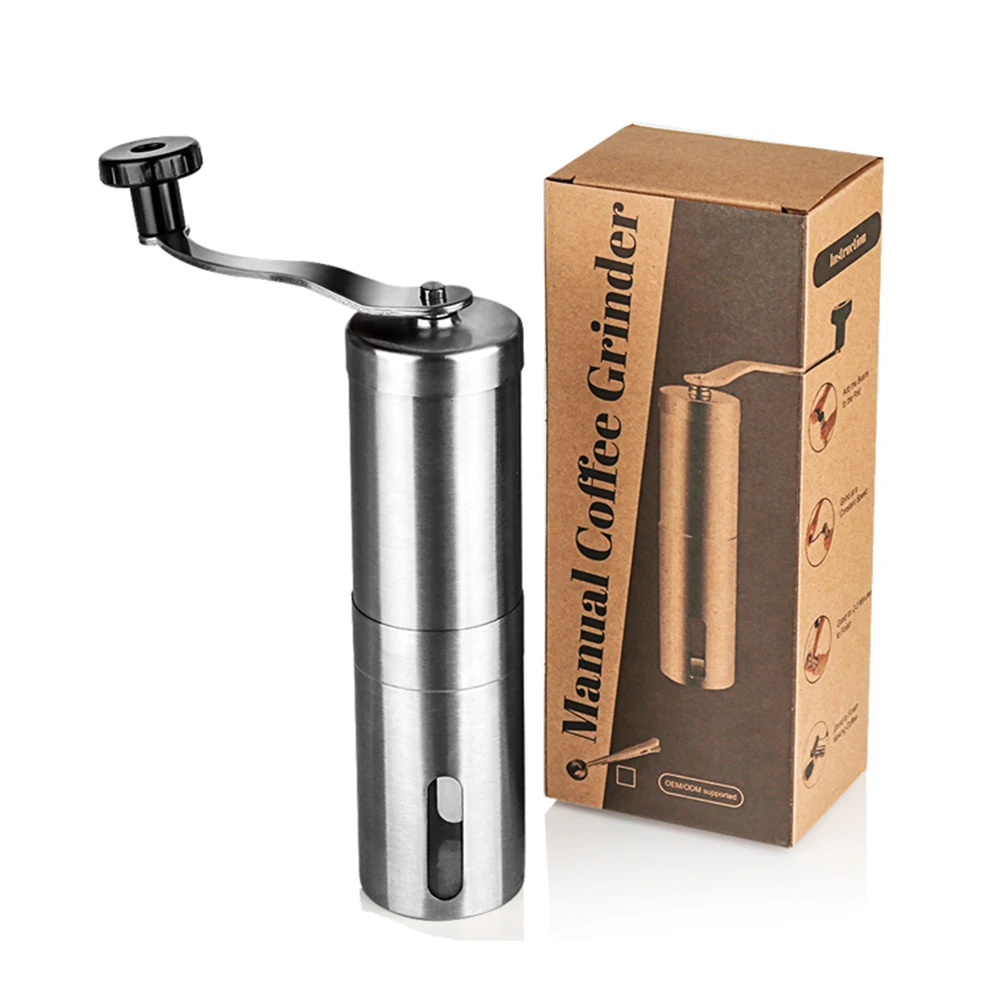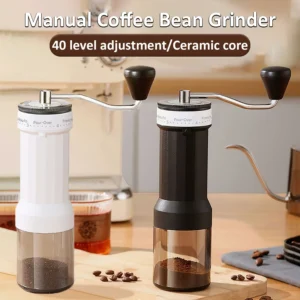Yes, Coffee Grinders Absolutely Need Regular Maintenance
Coffee grinders definitely require regular maintenance—there’s simply no way around this fact if you want to enjoy consistently excellent coffee. A well-maintained grinder delivers superior flavor, ensures uniform particle size for better extraction, and can last years longer than a neglected one. The good news? Proper maintenance is surprisingly simple and requires minimal time investment.
The difference between mediocre and exceptional coffee often comes down to how well you maintain your grinding equipment. Even spending just 5 minutes per week on basic cleaning can extend your grinder’s lifespan by years while preserving the quality of every cup you brew.
Consider these quick facts:
– Coffee oils can become rancid within days after grinding
– Buildup affects grind consistency, leading to uneven extraction
– Regular maintenance prevents unnecessary wear on mechanical parts
– Clean grinders produce more consistent particle sizes for better brewing
Throughout this guide, we’ll explore everything you need to know about maintaining manual coffee grinders effectively—from daily quick cleans to monthly deep maintenance, the right tools for the job, and how to troubleshoot common issues through proper care.
How Proper Maintenance Transforms Your Coffee Experience
The Flavor Factor
When coffee beans are ground, they release oils that naturally stick to grinder components. Left uncleaned, these oils become rancid within 1-2 weeks (even faster with dark roasts), imparting stale, bitter notes to every fresh batch of coffee you grind. Regular cleaning removes these oils before they can affect flavor, ensuring each cup tastes exactly as intended.
Consistency is Key
Perhaps the most significant benefit of proper maintenance is grind consistency. Residual coffee particles and oil buildup affect how evenly your beans are ground. When performing manual burr coffee grinder cleaning, you’re essentially ensuring uniform particle size—which directly impacts extraction quality. Even minor buildup can lead to both under and over-extraction happening simultaneously in the same brew.
Extending Equipment Life
Properly maintained grinders typically last 7-10 years, while neglected ones might need replacement after just 2-3 years. The math is simple: a few minutes of maintenance weekly saves hundreds of dollars in premature replacement costs. This is especially true for quality burr grinders, where coffee residue can create unnecessary friction and strain on motors and bearings.
Performance Benefits
You might not realize that why coffee grinder not consistent performance often stems from inadequate cleaning. A clean grinder:
– Operates more efficiently with less power consumption
– Grinds beans faster without clogging
– Produces less static electricity and mess
– Achieves more precise grind settings
– Creates less noise during operation
Hygiene Matters
Finally, let’s not forget about basic hygiene. Coffee grounds can trap moisture, creating environments where bacteria and mold thrive—particularly in warm kitchen environments. Regular cleaning prevents these potential health concerns while ensuring your morning ritual remains pure and enjoyable.
Clear Warning Signs Your Grinder Needs Immediate Attention
Keep an eye out for these tell-tale signs that your grinder requires cleaning:
Inconsistent grind size – When your grounds suddenly contain both fine powder and larger chunks, despite using the same setting, it’s time for maintenance.
Unexpected flavor changes – If your coffee suddenly tastes bitter, stale, or just “off” using the same beans, your grinder likely has old, rancid oils affecting flavor.
Strange noises – Clean grinders operate with a consistent sound. If you hear straining, clicking, or irregular grinding noises, something might be stuck or components may need cleaning.
Visible residue – Dark, sticky coating on burrs or in the grinding chamber indicates significant oil buildup that needs addressing.
Slower grinding times – When grinding the same amount of beans takes 20-30% longer than normal, buildup is creating resistance.
Excessive clumping – While some clumping is normal (especially with fine grinds), excessive clumping often indicates oil buildup acting as a binding agent.
Increased static – When grounds stick everywhere and create more mess than usual, buildup might be increasing static electricity.
Different Grinder Types, Different Maintenance Needs
Burr Grinders (Conical and Flat)
Burr grinders produce superior coffee but require more detailed maintenance. Conical burrs typically collect more grounds between their burr surfaces than flat burrs, requiring more frequent cleaning. The key difference in maintenance approach is disassembly requirements—conical burrs often need complete removal for thorough cleaning, while some flat burr designs allow cleaning without full disassembly.
Our selection of manual coffee burr grinders are designed with maintenance in mind, with many featuring easy-access burr systems.
Blade Grinders
Blade grinders have simpler mechanics and fewer places for coffee to hide, making cleaning more straightforward. However, they tend to develop more static issues while having fewer oil problems. Blade grinder maintenance focuses more on the grinding chamber and doesn’t require the precision reassembly that burr grinders do.
Manual Grinders
Manual grinders offer a significant maintenance advantage over electric models. Without motors and electrical components, most manual grinders can be disassembled completely, allowing thorough cleaning of all parts. The simpler mechanics typically mean fewer spaces for grounds to hide, making regular maintenance quicker and more effective.
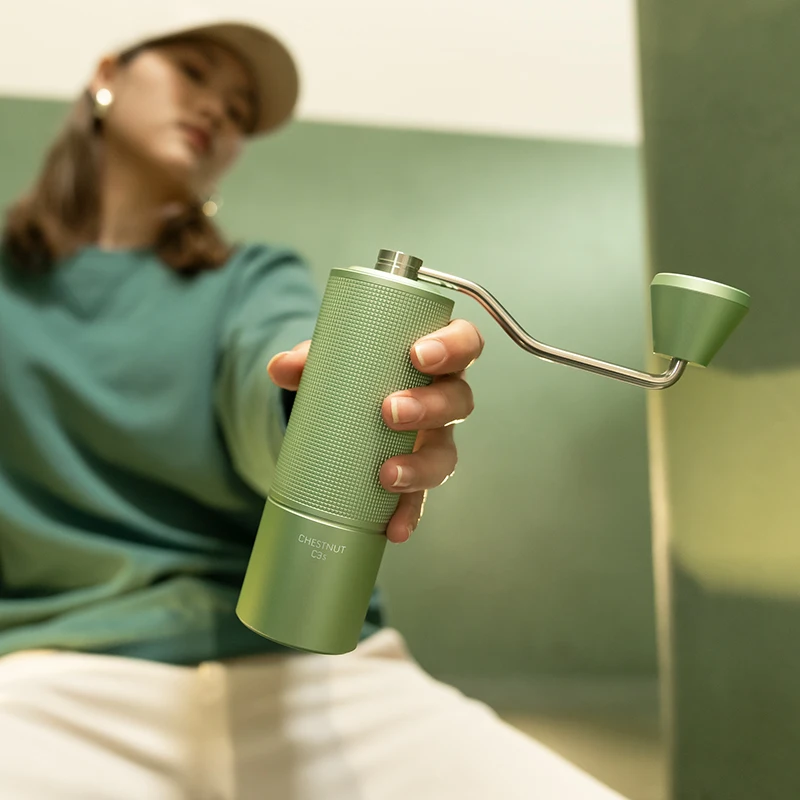
Essential Daily Maintenance: The 2-Minute Routine
Implementing this quick daily routine will prevent 80% of buildup issues and takes less than two minutes:
Safety first – Always unplug electric grinders before any maintenance (manual grinders are safer in this regard)
Brush out loose grounds – Using a small, stiff-bristled brush, remove loose grounds from the hopper, grinding chamber, and chute
Empty the grounds bin completely – Never leave grounds sitting in the collection bin, as they continue releasing oils
Wipe down exterior surfaces – Use a dry microfiber cloth to remove coffee dust from the exterior
Run a few beans through – After cleaning, grind a small number of beans (5-10) to flush out any loose particles before your next use
Many coffee enthusiasts find that hand burr grinder models simplify this daily maintenance routine due to their accessible design and smaller size.
Weekly Deep Clean: 15 Minutes to Perfect Performance
For Burr Grinders
- Remove the hopper and clean with a dry cloth (washing only if manufacturer approved)
- Disassemble the upper burr according to manufacturer instructions
- Use a dedicated coffee grinder brush to remove grounds from all burr surfaces
- Pay special attention to the threading and crevices where oils accumulate
- For stubborn residue, use a vacuum with narrow attachment
- Never wash burrs with water as this can cause rust
- Reassemble carefully, ensuring proper alignment
For Blade Grinders
- Empty all grounds and wipe interior with a dry cloth
- For oil removal, grind a small amount of plain white rice (only for blade grinders, never burrs)
- Empty the rice powder completely
- Wipe all interior surfaces again
- Clean the lid thoroughly, as oils often collect on the underside
Regular deep cleaning is essential for maximizing lifespan manual coffee grinder performance and ensuring consistent results in your daily brew.
Monthly Maintenance: The Complete Grinder Refresh
Once monthly (or every 5 pounds of coffee), perform this comprehensive maintenance:
Use grinder cleaning tablets – Products like Urnex Grindz or Full Circle tablets effectively remove oils without damaging components. Typically, use about 30-40 grams (about the same amount as you’d use for a brewing cycle).
How to use cleaning tablets:
– Empty all beans from the hopper
– Add the recommended amount of cleaning tablets
– Grind through completely at a medium grind setting
– Follow with a small amount of coffee beans (10-15g) to clear any residual cleaner
– Discard all groundsInspect burrs for wear – Look for dull edges, chips, or excessive wear
Check burr alignment – Ensure burrs are properly aligned for optimal grinding
Clean hopper seals – Wipe any rubber gaskets or seals with a dry cloth
Test grind consistency – After reassembly, check that your grinder produces consistent results
For manual grinders, lubricating hand coffee grinder burrs might be necessary after deep cleaning to maintain smooth operation—though use only food-safe lubricants recommended by manufacturers.
Essential Tools for Effective Grinder Maintenance
Having the right tools makes maintenance significantly easier and more effective:
Small brushes – A dedicated coffee grinder brush with stiff bristles can reach between burr teeth (old toothbrushes work in a pinch)
Microfiber cloths – For wiping surfaces without leaving lint behind
Vacuum with narrow attachment – Ideal for removing grounds from hard-to-reach areas
Grinder cleaning tablets/pellets – Purpose-made for removing oils without damage (Urnex Grindz, Full Circle)
Soft, dry paintbrush – Perfect for delicate parts and reaching corners
Compressed air – Optional but effective for blowing out trapped grounds (use gently)
Basic tools for disassembly – Usually just a screwdriver appropriate for your specific grinder
Finding the right essential equipment coffee grinder cleaning doesn’t have to be expensive—many of these items can be repurposed from household items or purchased affordably.
Myths vs. Facts: Avoiding Costly Grinder Cleaning Mistakes
Myth: Rice cleaning works for all grinders
Fact: While rice can work for blade grinders, it can damage burr grinders. Rice is harder than coffee beans and can dull or chip burr edges. Many manufacturers explicitly state that using rice will void warranties. Stick to proper grinder cleaning tablets for burr grinders.
Myth: Water cleaning is fine for all parts
Fact: Water can cause rust on metal burrs within 24-48 hours. Never submerge electric grinders, and only wash removable plastic parts if the manufacturer specifically states they’re dishwasher-safe. Metal components should be cleaned with dry methods only.
Myth: Infrequent cleaning is sufficient
Fact: Coffee oils become rancid within days to weeks. Regular cleaning prevents these oils from affecting flavor and causing mechanical issues through buildup. The accumulative effect of neglect results in both poor coffee and shortened grinder lifespan.
Myth: Leaving beans in the hopper is fine
Fact: Coffee beans in hoppers continue releasing oils that collect on surfaces. Additionally, beans lose freshness faster in hoppers than in air-tight containers. For best results, only add the beans you intend to grind immediately.
Myth: Strong cleaners work better
Fact: Harsh chemicals and solvents can damage grinder components and leave behind residues that affect coffee flavor. Stick to food-safe cleaners designed specifically for coffee equipment.
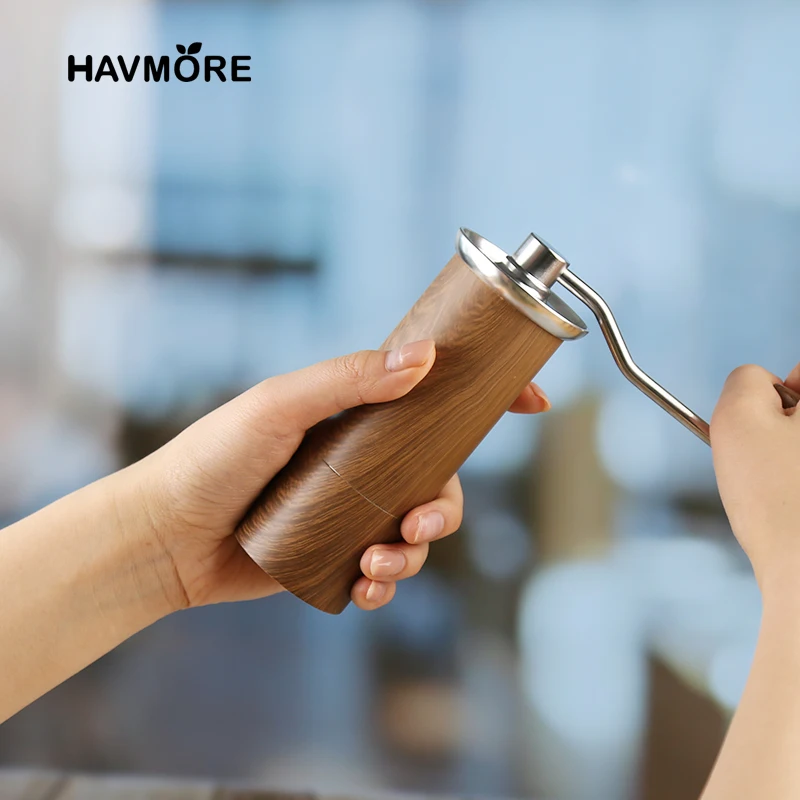
Quick Reference: Maintenance Schedule for Coffee Grinders
| Timeframe | Maintenance Tasks |
|---|---|
| Daily (after each use) | • Brush out loose grounds • Wipe exterior • Empty grounds bin completely |
| Weekly (every 5-7 uses) | • Disassemble burrs per manufacturer instructions • Thorough brushing of all components • Clean grounds chute • Wipe hopper |
| Monthly (or every 5 lbs coffee) | • Clean with grinder tablets • Check burr alignment • Inspect for wear • Clean hopper seals |
| Special Considerations | • Dark/oily beans: increase frequency by 50% • Flavored coffees: clean immediately after use • High-volume use: adjust to weekly deep cleans |
Our stainless steel manual coffee grinders are particularly forgiving in terms of maintenance while still requiring regular care for optimal performance.
Hand Burr Grinder, Hand Crank Coffee Grinder, Manual Espresso Grinder, Portable Coffee Grinder
Price range: $262.72 through $300.22 Select options This product has multiple variants. The options may be chosen on the product pageManual Burr Mill, Manual Coffee Grinder Stainless Steel, Manual Coffee Mill Grinder, Mechanical Coffee Grinder
Price range: $127.26 through $130.32 Select options This product has multiple variants. The options may be chosen on the product pageHand Burr Grinder, Manual Coffee Grinder Stainless Steel, Precision Manual Grinder
Price range: $183.64 through $187.52 Select options This product has multiple variants. The options may be chosen on the product pageCeramic Burr Coffee Grinder, Hand Burr Grinder, Hand Crank Coffee Grinder, Manual Coffee Bean Grinder
Price range: $59.17 through $59.96 Select options This product has multiple variants. The options may be chosen on the product page
Troubleshooting Common Grinder Issues Through Maintenance
Problem: Inconsistent grind size
Solution: Thoroughly clean burrs and check for alignment issues. Pay special attention to the adjustment mechanism, which may have coffee particles affecting precision.
Problem: Strained motor sounds
Solution: Clean the burr chamber completely, checking for foreign objects or excessive buildup creating resistance. Ensure no beans are stuck between burrs.
Problem: Off-tasting coffee
Solution: Focus cleaning on oil removal using grinder tablets. Pay special attention to burrs and the grounds chute where rancid oils collect.
Problem: Jamming or clogging
Solution: Clean the grounds exit chute and collection bin thoroughly. Check for moisture causing grounds to stick together and create blockages.
Problem: Static buildup
Solution: Try the RDT method (Ross Droplet Technique)—adding a tiny drop of water to beans before grinding. Additionally, ensure thorough cleaning of all plastic parts where static tends to accumulate.
Precision grinders like our manual coffee grinder for espresso models require particularly careful maintenance to ensure the consistent fine grinds necessary for proper espresso extraction.
Beyond Cleaning: When to Replace Grinder Burrs
While regular cleaning solves most issues, burrs do eventually wear out. Here’s how to know when cleaning isn’t enough:
Visibly worn edges – Burrs should have sharp, defined edges. Rounded or dull edges indicate replacement time.
Chipping – Small chips or breaks in burr surfaces affect grind consistency.
Significantly slower grinding – If thorough cleaning doesn’t restore normal grinding speed, burrs might be dull.
Inability to achieve fine grinds – When your grinder can no longer produce properly fine grounds for espresso, burrs likely need replacement.
Typical burr lifespans vary by material and use:
– Stainless steel burrs: 500-1000 pounds of coffee
– Ceramic burrs: 1500-2000 pounds of coffee
– High-quality hardened steel burrs: 1000-1500 pounds
Many quality grinders feature manual coffee grinders replaceable burrs, making this maintenance step more economical than replacing the entire unit.
Will Different Coffee Types Affect Your Maintenance Schedule?
Different beans absolutely require adjusting your maintenance approach:
Dark roasts and oily beans – These release more oils during grinding, requiring cleaning up to twice as frequently. Look for shiny residue on burrs as an indicator.
Flavored coffees – The flavoring oils can persist through multiple cleaning cycles and potentially transfer to future batches. Clean immediately after grinding flavored beans.
Light roasts – While generally less oily, they still require regular maintenance but can often follow standard cleaning schedules.
Decaffeinated coffees – Contain similar oils to regular coffee and require the same maintenance schedule.
For heavy dark roast users, consider implementing bi-weekly deep cleaning rather than waiting for monthly maintenance.
Can You Over-Clean Your Coffee Grinder?
While regular cleaning is essential, there are practical limits:
Disassembly frequency – Completely taking apart your grinder more than weekly can potentially affect calibration and alignment, particularly for precision grinders.
Cleaning products – Using grinder cleaning tablets more than monthly is generally unnecessary and could be wasteful, though not harmful.
Wear from cleaning – The physical act of cleaning rarely causes significant wear, but improper reassembly might. Always follow manufacturer guidelines.
Time investment – The law of diminishing returns applies—daily quick cleaning and weekly deeper cleaning offer the best balance of results versus time investment.
The ideal approach is consistent, scheduled maintenance rather than sporadic intense cleaning sessions. This keeps your grinder in optimal condition without risking complications from excessive disassembly.
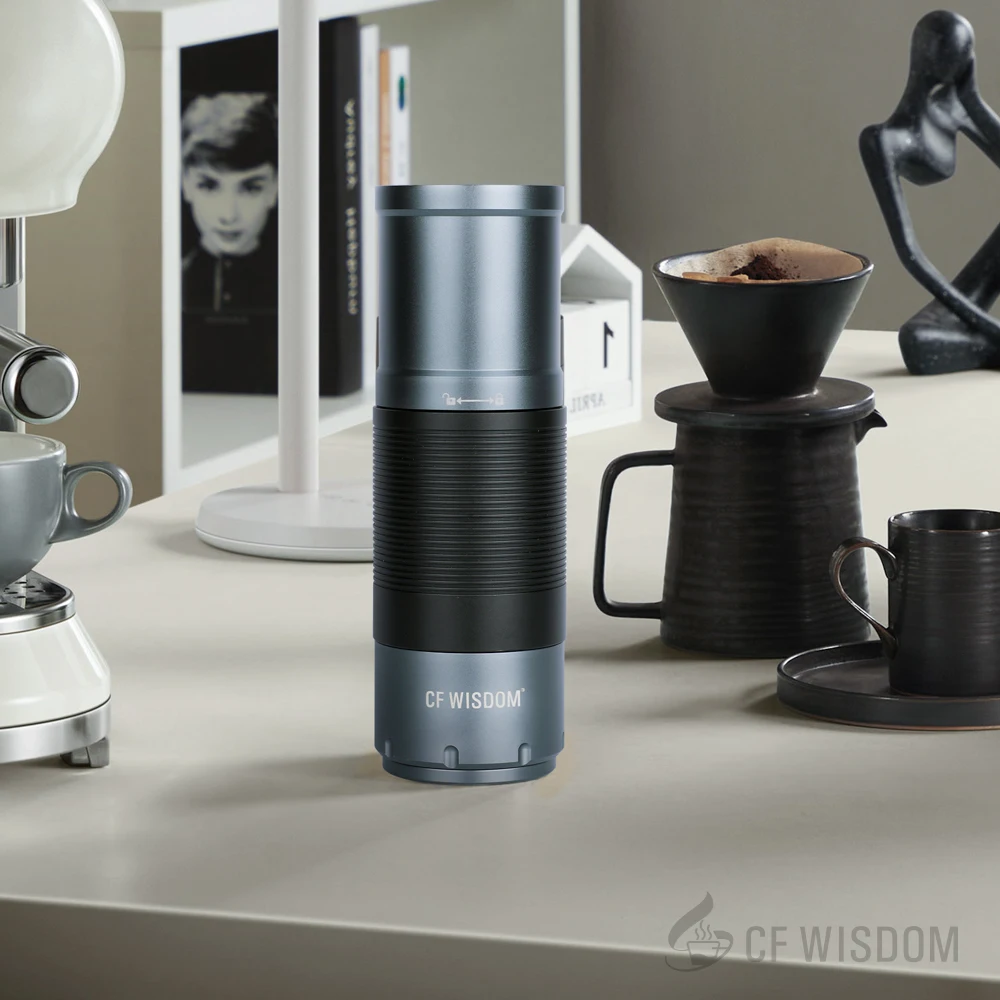
A Clean Grinder is the Secret to Consistent, Delicious Coffee
Throughout this guide, we’ve seen how proper maintenance transforms both your coffee experience and the longevity of your equipment. Just 5-10 minutes of weekly care ensures consistent flavor profiles, extends your grinder’s useful life, and improves extraction quality with every brew.
Remember that maintenance isn’t just about preserving your investment in quality equipment—it’s about honoring the care that went into growing, processing, and roasting the beans. Even the finest coffee beans cannot overcome the limitations of a poorly maintained grinder.
By establishing simple maintenance habits, you ensure that your long manual coffee grinders last for years while delivering consistent results cup after cup. The small effort required pays enormous dividends in coffee quality and equipment reliability.

